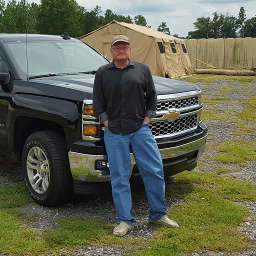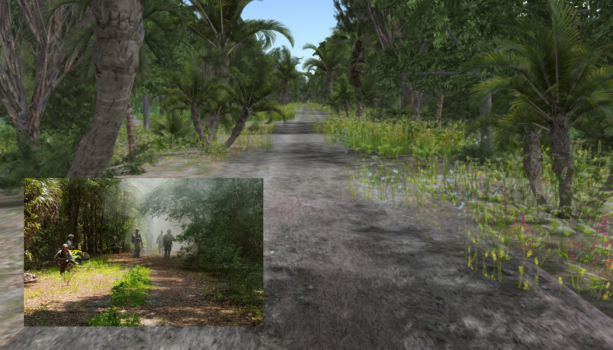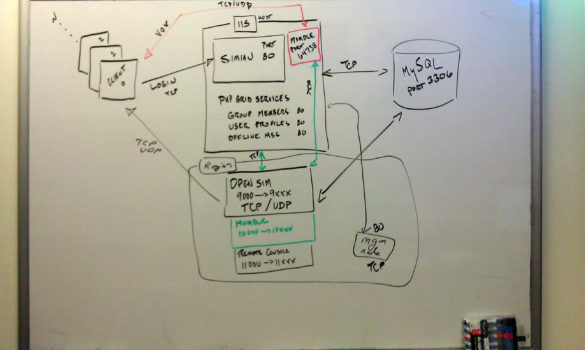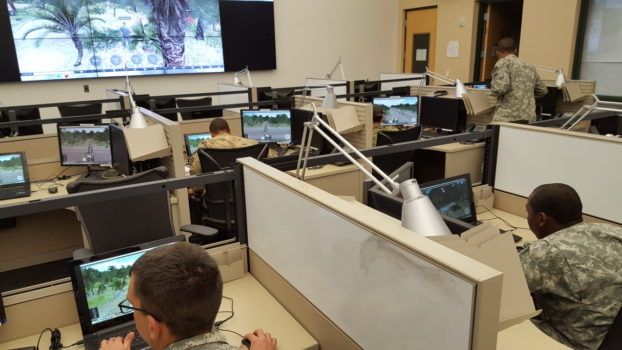Editor: The U.S. Army’s MOSES grid has long been making cutting-edge contributors to OpenSim, building a grid management system, running scalability tests, and donating content to the OpenSim community. Now they are in the process of moving to a branch of OpenSim called Halcyon, open-sourced last year by InWorldz, OpenSim’s most popular grid, and are about to release a new Web-based viewer for OpenSim. Douglas Maxwell, who wrote the column below, is the science and technology manager for virtual world strategic applications at the U.S. Army’s Simulation & Training Technology Center, and oversees the project.
What are the MOSES philosophies?

I got asked this question recently and realized that we have had so many people join since the original founding of MOSES that it would be a good idea to chat about it.
The MOSES philosophies are about practical applications of scientific exploration to common military and civilian virtual world application problems.
The MOSES philosophies are about our “can-do” attitude and we get things done. We hold public tests and invite the community to participate in our work, where when we fail – it is epic. We discuss those failures and learn from them. We do not hide our failures and publicly discuss what we learn. We pick ourselves up, perform after action reviews, refine and update our technology and test again.
The MOSES community provides valuable feedback and beta testers. We are relentless in our pursuit of solutions to the hardest problems. When we succeed, we donate the work to the community, and everyone benefits.

MOSES and the public
A number of you have asked me to elaborate on my idea of a transition of the MOSES to a civilian foundation.
MOSES is not just a virtual simulator, it is much more. The Military Open Simulator Enterprise Strategy encompasses everything we have learned through application of open simulator technology to training and education. MOSES is composed of a tremendously diverse population of dedicated people, research, data, experimental design, refined assumptions, surprising results, software architecture, high quality content, and technology.
I am exploring viable options for the continuation of the MOSES philosophies through a transition of our work to a civilian organization.
Over the past five years, we have built a vast network of virtual world researchers and practitioners, conducted numerous technology improvement tests, conducted human performance testing, created and donated our own code, and donated high quality content back to the OpenSimulator community.
We follow a professional code of conduct within our grids and strive to provide legitimacy and credibility to this technology.
We have conducted weekly office hours meetings continuously since March of 2011 and gladly “eat our own dog food.”
As we evolve in our thinking through the analysis of new incoming data, so will our platforms also evolve. We are working on a HTML5-based browser viewer which will ultimately break backwards compatibility with older simulator code.
We are working on the design for safer data transmission protocols and login authentication mechanisms. This will also break backwards compatibility.

We have taken a hard look at the barriers to entry for this technology and designed logical technical responses.
When a college professor tells me she cannot install the MOSES client because the university system administrators won’t allow the network traffic firewall exceptions, we have a similar problem with military networks.
This means we need a new approach to access – Web Viewer – and data transmission – SSL TCP. We know that the computers have web browsers and port 22 in the firewall is open. Both she and I will benefit when we are done.
When we observe an excessive amount of time is required to train people to use the tools, we respond by designing and deploying a different user interface. We test and refine and declare victory.
When we see that we need to support hundreds of entities to create a dynamic and rich environment in addition to large numbers of scene objects, we respond by profiling and dissecting the core simulator and design a new architecture.
We can now support two full platoons of soldiers in the environment simultaneously and you get to let your large classes log in all 100 students at the same time. It is not enough to accept all the client connections, they must be able to log in and perform without lag.
We take a deliberate systems engineering approach to our technology. It may take a bit longer to get work out, but what we produce does exactly what it was designed to do.
This technology and content is yours.
A public purpose statement is formally entered into all funding contracts related to MOSES work. This is not accidental.
We’ve made provisions in our code through open source licensing and creative commons licensing attached to our content. Our research is published in open literature. We discuss the latest work in office hours.

From the military to the civilian space
A civilian foundation needs to pick this work up and be a stakeholder.
It must be led by grown-ups who know how to run a professional entity.
I would like to work with like-minded professionals who can be entrusted with the continuation of our work.
This organization would not be controlled by MOSES in any way, but a parallel civilian entity that shares our work ethic and philosophy for the application of virtual world technology to civilian educational and training uses.
Ideally, this foundation would be supported through membership fees, research grants, and service contracts. The foundation should support a staff of code and content maintainers. This foundation would be responsible for the maintenance of a source code repository that would serve as an official residence for a safe and secure open source simulator.
This foundation would be chartered with the formalization of inter-grid data interoperability standards, a safe and secure post-hypergrid specification.
This foundation would conduct code reviews and be the official acceptance authority for outside contributions. This foundation would establish release cycles so that people dependent on the code would know when to expect updates and be able to plan for them. This foundation would be the safe and official originator of “out of cycle” security patches.
The foundation will be responsible for the creation and maintenance of a technology roadmap so that users will know when features will be released for testing and adoption.
In short — it is time for the civilians to make this a professional activity.
This foundation needs to be chartered with a research focus in addition to any philanthropic or charity language you want. This thing would be formally organized as a legal entity. Whether it should be for-profit or non-profit, I can’t provide input into that, the organizers need to decide.
This foundation needs a Tax ID, DUNS and CAGE codes. It needs a formalized accounting system and the ability to speak to government funding agents.
Educators: if you are interested in this, talk to your university business incubator.
Industry: this is an opportunity to guide the creation and widespread adoption of Metaverse 2.0.
I look forward to your input and await contact from the brave souls who think they can pull this off.
- MOSES calls for new foundation to move OpenSim forward - September 27, 2016
- US military turns to Halcyon branch of OpenSim - August 16, 2016
- LIDAR accelerates virtual building - October 11, 2014
